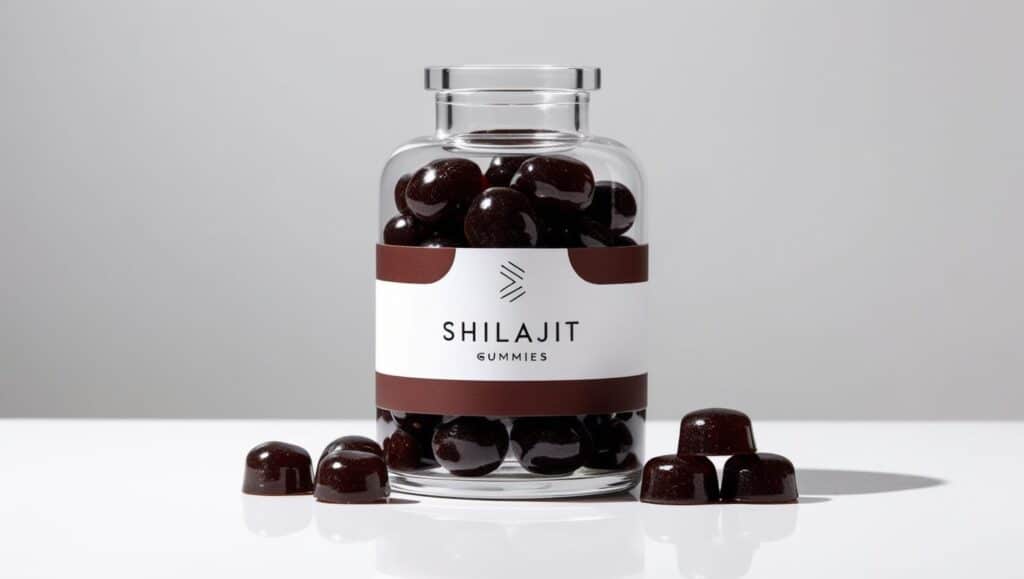Buying Shilajit Gummies? How do they compare to more traditional supplements?

Introducing the new rising star – Shilajit Gummies
With various forms of Shilajit available on the market, choosing the right one can be challenging. This article explores the different forms of Shilajit, including the rising star—Shilajit gummies—their benefits, and which option might be best for you.
What Is Shilajit?
Shilajit, a natural substance derived from the rocks of the Himalayas, has been used for centuries in traditional Ayurvedic medicine. Known for its rich mineral content and bioactive compounds, Shilajit is increasingly popular among health-conscious individuals, particularly those aged 40 and above.
Shilajit is a sticky, tar-like substance formed over centuries by the decomposition of plant matter and minerals in mountainous regions. It contains fulvic acid, humic acid, and over 84 trace minerals, making it a potent supplement for energy, cognitive function, and overall vitality. Research published in the Journal of Ethnopharmacology highlights its adaptogenic properties, which help the body resist physical and mental stress Agarwal et al., 2007.
Forms of Shilajit
Shilajit is available in several forms, each with its own advantages and drawbacks. Below, we compare the most common options, including the increasingly popular gummies:
1. Raw Shilajit
Raw Shilajit is the purest form, extracted directly from rocks and minimally processed. It appears as a sticky resin or tar-like substance and retains its natural composition.
Pros:
- Contains the highest concentration of bioactive compounds, including fulvic acid.
- Closest to its natural state, making it ideal for purists.
Cons:
- Requires careful handling and precise dosing.
- May contain impurities if not properly purified.
A study in Phytotherapy Research found that raw Shilajit significantly improved mitochondrial function, which is crucial for energy production Pandit et al., 2016.
Best For: Individuals seeking a potent, unprocessed supplement and willing to invest time in proper preparation.
2. Powdered Shilajit
Powdered Shilajit is created by drying and grinding raw Shilajit into a fine powder. It is often encapsulated or mixed into beverages.
Pros:
- Convenient and easy to dose.
- Longer shelf life compared to raw Shilajit.
Cons:
- May lose some bioactive compounds during processing.
- Less potent than raw or resin forms.
Research in Food and Chemical Toxicology suggests that powdered Shilajit retains significant antioxidant properties, though slightly reduced compared to raw forms Ghosal et al., 2012
Best For: Those looking for a convenient, travel-friendly option.
3. Shilajit Resin
Shilajit resin is a semi-purified form, where raw Shilajit is cleaned and concentrated into a thick, viscous substance. It is often sold in jars or small containers.
Pros:
- Easier to handle than raw Shilajit.
- Retains a high concentration of fulvic acid and minerals.
Cons:
- Slightly more processed than raw Shilajit.
- Requires careful storage to prevent drying out.
A study in Evidence-Based Complementary and Alternative Medicine found that Shilajit resin effectively reduced fatigue and improved physical performance in animal models Carrasco-Gallardo et al., 2012.
Best For: Individuals seeking a balance between potency and convenience.
4. Liquid Shilajit
Liquid Shilajit is a diluted form, often mixed with water or other solvents to create an easy-to-consume supplement.
Pros:
- Highly convenient and easy to dose.
- Absorbed quickly by the body.
Cons:
- Lower concentration of active compounds.
- May contain additives or preservatives.
Best For: Those who prefer a quick, fuss-free supplement.
5. Capsules and Tablets
Capsules and tablets contain powdered or resin Shilajit in a pre-measured dose.
Pros:
- Extremely convenient and portable.
- No taste or odour, making it easier to consume.
Cons:
- May contain fillers or binders.
- Less bioavailable than liquid or resin forms.
A review in International Journal of Ayurveda Research noted that while capsules are convenient, their efficacy depends on the quality of the raw material and manufacturing process Meena et al., 2010.
Best For: Busy professionals who prioritise convenience.
6. Shilajit Gummies
Shilajit gummies are a newer, innovative form of this supplement. They combine Shilajit extract with other ingredients like natural sweeteners and flavours to create a chewable, enjoyable product.
Pros:
- Highly palatable and easy to consume, making them ideal for those who dislike the taste or texture of traditional Shilajit.
- Pre-measured doses ensure consistency.
- Portable and discreet, perfect for on-the-go use.
Cons:
- Often contain added sugars or artificial ingredients to enhance flavour.
- Lower concentration of Shilajit compared to raw or resin forms.
- May not be suitable for individuals with dietary restrictions (e.g., vegans, if gelatin is used).
While there is limited academic research specifically on Shilajit gummies, their growing popularity is driven by consumer demand for convenient and enjoyable supplement options. The efficacy of gummies depends on the quality of the Shilajit extract used and the manufacturing process.
Best For: Individuals who prioritise taste and convenience, especially those new to Shilajit or averse to traditional forms.
Which Form Should You Buy?
The best form of Shilajit depends on your lifestyle, preferences, and health goals:
- For maximum potency: Choose raw Shilajit or resin.
- For convenience: Opt for capsules, tablets, or gummies.
- For balance: Shilajit resin offers a middle ground.
- For taste and enjoyment: Shilajit gummies are an excellent choice.
When purchasing Shilajit, always look for third-party testing and certifications to ensure purity and quality. The UK Food Standards Agency (FSA) recommends buying supplements from reputable brands that comply with Good Manufacturing Practices (GMP) .
Conclusion
Shilajit is a versatile supplement with numerous health benefits, particularly for individuals aged 40 and above. Whether you prefer raw, powdered, resin, liquid, capsules, or the increasingly popular gummies, each option has its unique advantages. By understanding the differences, you can make an informed choice that aligns with your health goals and lifestyle.
References
- Agarwal, S. P., et al. (2007). Shilajit: A review. Journal of Ethnopharmacology. https://www.sciencedirect.com/science/article/pii/S0378874106004531
- Pandit, S., et al. (2016). Effects of Shilajit on mitochondrial function and oxidative stress. Phytotherapy Research. https://onlinelibrary.wiley.com/doi/abs/10.1002/ptr.5487
- Ghosal, S., et al. (2012). Antioxidant properties of Shilajit. Food and Chemical Toxicology. “https://www.sciencedirect.com/science/article/pii/S0278691512002465
- Carrasco-Gallardo, C., et al. (2012). Shilajit and physical performance. Evidence-Based Complementary and Alternative Medicine. https://www.hindawi.com/journals/ecam/2012/674142/
- Meena, H., et al. (2010). Shilajit in Ayurveda: A review. International Journal of Ayurveda Research. https://www.ijaronline.com/article.asp?issn=0974-7786;year=2010;volume=1;issue=2;spage=65;epage=71;aulast=Meena
- UK Food Standards Agency (FSA). (2023). Food supplements guidance. https://www.food.gov.uk/business-guidance/food-supplements
